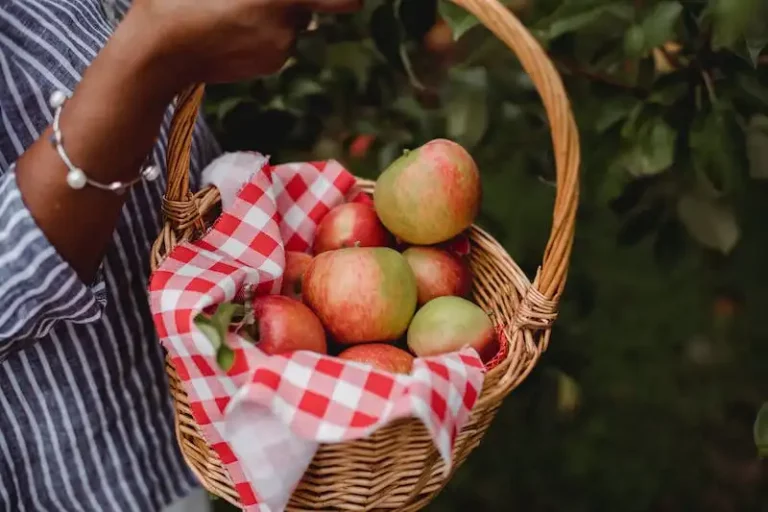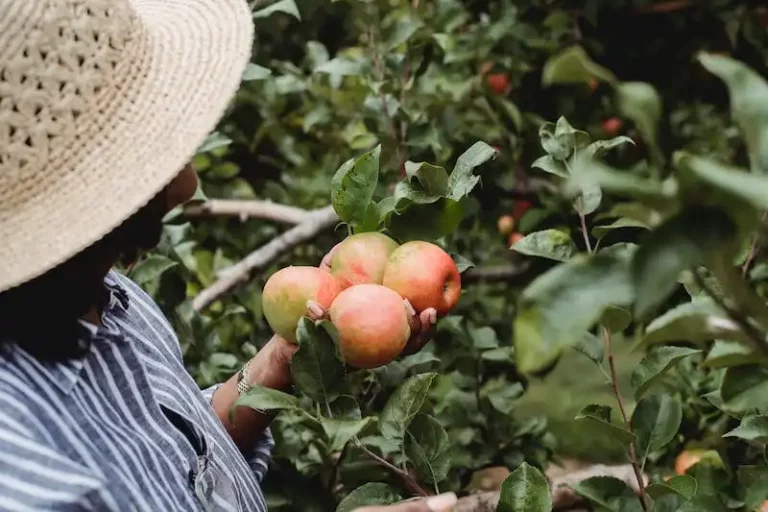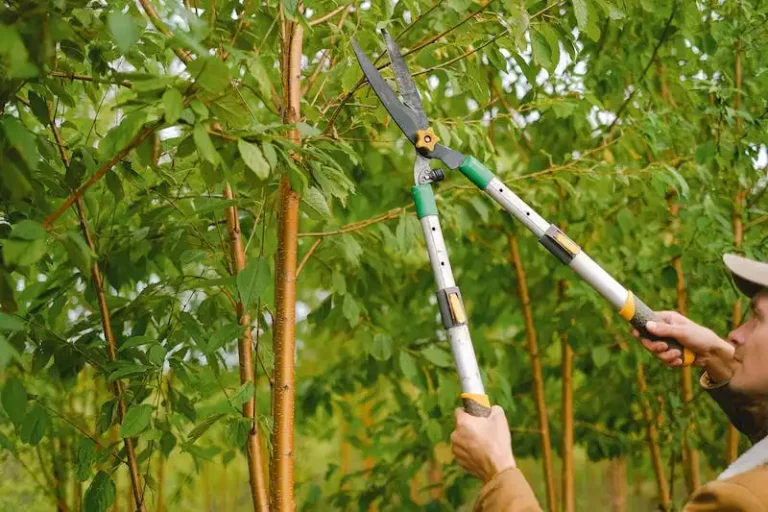Prayer plants, especially those belonging to the genus Maranta, are popular houseplants that provide a splash of color and spread their broad, green leaves with beautiful markings in homes and offices. With proper care, these plants can thrive and stay healthy, adding vibrancy to any indoor space.
One of the most commonly grown varieties of prayer plants is the Maranta leuconeura, also known as the ‘Marisela’. This plant is known for its deep green leaves with white or bicolor markings that resemble brush strokes. It is frequently seen in homes and offices due to its overall hardiness and adaptability.
Another type of prayer plant that is commonly seen is the Maranta leuconeura var. kerchoveana. This variety has similar characteristics to the ‘Marisela’, but its leaves have a darker green color and more pronounced markings. It is a compact plant, making it suitable for smaller spaces.
When caring for prayer plants, it is important to provide them with the right conditions. They prefer filtered sunlight, so placing them near a window where the light is not too intense is ideal. The soil should be well-draining and rich in organic matter, and a mixture of peat moss, sand, and potting soil can be used. Prayer plants also require high humidity, so misting the leaves or placing a tray of water nearby can help maintain the desired moisture level.
Watering prayer plants can be a bit tricky. They don’t like to stay too wet or too dry, so it’s important to find the right balance. Water the plant when the top inch of soil feels dry to the touch, and make sure to water thoroughly until the water drains out of the bottom of the pot. Avoid over-watering, as this can lead to root rot.
Fertilizing prayer plants is important to keep them healthy and promote growth. A balanced, water-soluble fertilizer can be applied every two to three months during the active growing season. Be sure to follow the instructions on the fertilizer package for correct dosage and application.
Prayer plants are relatively pest-free, but they can occasionally be affected by common plant pests such as aphids, mealybugs, and spider mites. If you notice any signs of infestation, it’s important to take immediate action to prevent the pests from spreading to other plants. In this case, using an organic pesticide or insecticidal soap can help eliminate the pests.
In conclusion, prayer plants are a popular choice for indoor gardening due to their unique leaf patterns and overall hardiness. By providing them with the right conditions and care, you can enjoy the beauty of these plants in your home or office.
If you have any more questions about growing prayer plants or dealing with any specific issues, feel free to ask our expert grower. We are here to help you succeed in your indoor gardening journey!
Different Varieties of Prayer Plants
Prayer plants are a popular choice for indoor plant enthusiasts due to their attractive foliage and unique characteristic of their leaves folding up at night, resembling hands in prayer. There are several different varieties of prayer plants that you can choose from, each with its own distinct features and growth habits.
One of the most popular varieties is the Maranta leuconeura, also known as the “Prayer Plant”. This variety has greenish foliage with beautiful patterns of white veins, making it a standout choice for any indoor space. Its leaves fold up in the evening and open again in the morning, hence the name “Prayer Plant”.
Another popular variety is the Calathea makoyana, commonly referred to as “Peacock Plant”. This variety has strikingly patterned foliage with shades of green and cream. Its leaves have a waxy texture and can grow up to 2 feet in height. The Peacock Plant prefers filtered sunlight and well-draining soil.
The Calathea orbifolia is another commonly cultivated variety, with large, round leaves that have silver patterns on dark green backgrounds. This variety thrives in bright, indirect light and requires regular watering to thrive.
If you’re looking for a more compact variety, the Maranta “Red Vein Prayer Plant” is an excellent choice. As the name suggests, this variety has red veins running through its green leaves, making it a visually striking addition to your indoor plant collection. It’s also known for its easy-care nature and resilience against common plant pests.
Lastly, the Maranta “Variabilis” is another popular prayer plant variety known for its variegated foliage and vibrant colors. It has leaves with a mix of green, white, and pink hues, adding a pop of color to any space. This variety prefers bright, indirect light and well-draining soil.
When it comes to caring for prayer plants, it’s important to provide them with the right conditions. They thrive in a humid environment, so misting them regularly or placing a tray of water near them can help create the humidity they need. They also prefer being positioned away from direct sunlight, as harsh light can damage their leaves.
In terms of watering, prayer plants like to be evenly moist but not waterlogged. It’s best to water these plants when the top inch of soil feels dry to the touch. Overwatering can lead to root rot, so it’s important to ensure proper drainage in the pot or container.
Fertilizing is important for the growth and health of prayer plants. Use a balanced, water-soluble fertilizer during the growing season (springtime through fall) and reduce fertilizing in the winter. Applying a layer of organic mulch or moss on top of the soil can also help retain moisture and provide nutrients to the plant.
If you notice any problems such as yellowing leaves or pest infestations, promptly address the issue. Common pests that prayer plants can attract include spider mites, aphids, and mealybugs. You can use natural methods like neem oil or insecticidal soap to control these pests.
As prayer plants grow, they may need repotting. This is typically done in the springtime when the plant is actively growing. Use a well-draining potting mix that consists of peat moss, sand, and perlite to ensure good drainage. A larger pot with adequate drainage holes will provide enough space for the roots to grow and prevent rootbound conditions.
In summary, there are many different varieties of prayer plants to choose from, each with its own unique characteristics and care requirements. Whether you prefer the classic “Prayer Plant” or the striking patterns of the “Peacock Plant,” prayer plants are a wonderful addition to any indoor space and can bring beauty and tranquility to your home.
Join our newsletter
Are you interested in learning more about prayer plant varieties and how to care for them? Join our newsletter to stay up-to-date with the latest tips, news, and advice for growing and maintaining these beautiful plants.
By joining our newsletter, you’ll receive regular emails with information about different prayer plant varieties, their descriptions, and how to properly care for them. We’ll also provide insights on common problems that prayer plants may encounter, such as thrips or diseases, and offer tips on how to ensure their overall health and well-being.
Whether you’re a seasoned prayer plant grower or just starting out, our newsletter is an excellent resource to enhance your knowledge and provide you with valuable information about these popular plants. We’ll share helpful articles and guides on topics like pruning, fertilizing, and watering, as well as tips for maintaining the ideal humidity and temperature levels for your plants.
Join our newsletter today and discover why prayer plants are a favorite among plant lovers. Don’t miss out on the opportunity to learn more about the different prayer plant varieties, including the Maranta, Calathea, and Stromanthe plants.
To join our newsletter, simply fill out the subscription form on our website and click the “subscribe” button. It’s quick and easy, and you’ll become part of our community of prayer plant enthusiasts. Join now and unlock the secrets to successfully growing and caring for these beautiful plants!
Types Of Prayer Plant: Growing Different Prayer Plant Varieties
Prayer plants are highly attractive indoor plants that can help create a peaceful and calming atmosphere in your home. With their variegated leaves and unique patterns, these plants are sure to be a conversation starter and add a touch of natural beauty to any space.
There are several different types of prayer plants to choose from, each with its own unique characteristics. Some popular varieties include:
- Maranta leuconeura: This is one of the most well-known varieties of prayer plants. It has beautiful deep green leaves with striking veins and a red underside. It prefers filtered or indirect sunlight and high humidity.
- Maranta ‘Kim’: The ‘Kim’ variety is known for its showy variegated leaves, with dark green patterns and a creamy-white center. It enjoys bright, indirect light and slightly lower humidity compared to other varieties.
- Maranta ‘Marisela’: This variety has elongated leaves with dark green markings and a burgundy underside. It is relatively compact and a great choice for smaller spaces. It thrives in medium to bright light and prefers slightly higher humidity.
When growing prayer plants, it’s important to provide them with the right conditions to ensure their health and vigor. Here are some key points to keep in mind:
- Light: Most prayer plants prefer bright, indirect light. Avoid placing them in direct sunlight, as it can scorch their leaves. If you notice your plant’s leaves turning yellow or brown, it may be receiving too much light.
- Humidity: Prayer plants are native to tropical areas and thrive in high humidity. If your home has dry air, consider misting your plants regularly or placing a tray of water near them to increase humidity levels.
- Watering: Prayer plants like to be kept consistently moist, but not soggy. Water them when the top inch of soil feels dry to the touch. It’s also important to use well-draining soil to prevent root rot.
- Troubleshooting: If your prayer plant is showing signs of problems, such as yellowing leaves or stunted growth, it may be due to issues like overwatering, underwatering, or pests. Regularly inspect your plants for bugs or signs of diseases and take appropriate actions to address the issues.
To keep your prayer plants looking their best, consider regularly pruning them to remove any dead or damaged leaves. This will not only help improve the plant’s appearance but also promote healthy growth.
In conclusion, growing different varieties of prayer plants can be a rewarding experience. By following the care guide and troubleshooting tips mentioned above, you can ensure that your prayer plants thrive and add beauty to your indoor space.
For more information on prayer plants and other houseplants, be sure to subscribe to our newsletter where we frequently address common questions and provide helpful gardening tips.
About Maranta Varieties
Maranta varieties, also known as prayer plants, belong to the Marantaceae family. These plants are typically grown indoors due to their stunning foliage and varying hardiness in different areas. Prayer plants are known for their leaves that fold up at night, resembling hands in prayer, hence the name. They are popular choices for indoor plants because they are relatively easy to care for and provide a beautiful addition to any home or office.
One of the most commonly found varieties of Maranta is Maranta arundinacea, also known as the arrowroot plant. This variety has greenish leaves with red veins and pronounced white splotches. Another popular variety is Maranta leuconeura, commonly known as the red prayer plant or lemon lime Maranta. This variety has leaves that are green with red veins and a vibrant red underside. It is a spreading plant that can grow up to six inches tall.
If you’re looking for a quick guide to Maranta varieties, here is a brief list of some of the most popular ones:
| Variety | Description |
|---|---|
| Maranta arundinacea | Green leaves with red veins and white splotches |
| Maranta leuconeura | Green leaves with red veins and red undersides |
| Maranta leuconeura ‘Kim’ | Green leaves with red veins and pink midrib, often mistaken for Maranta leuconeura |
To ensure the proper care of your Maranta varieties, it is important to keep them indoors in a humid environment with a temperature ranging from 60 to 80 degrees Fahrenheit. These plants prefer bright, indirect light, so placing them near a window where they won’t receive direct sunlight is ideal. Watering should be done when the top inch of soil feels dry to the touch, ensuring that the plant doesn’t sit in waterlogged soil. Using well-draining soil and a balanced fertilizer can help prevent diseases and provide the necessary nutrients for healthy growth.
Maranta varieties are also prone to pests such as bugs and diseases, so keeping a close eye on them and addressing any issues promptly is important. Common pests that can affect prayer plants include spider mites, mealybugs, and aphids. If you have any questions or need more information about Maranta varieties, join our newsletter to learn more and receive helpful tips and advice.



